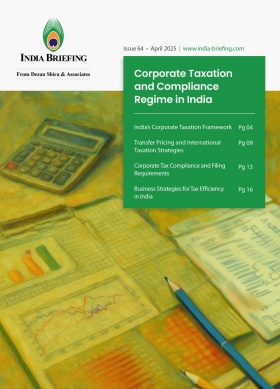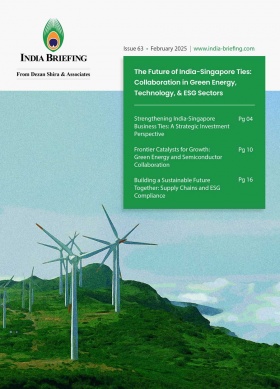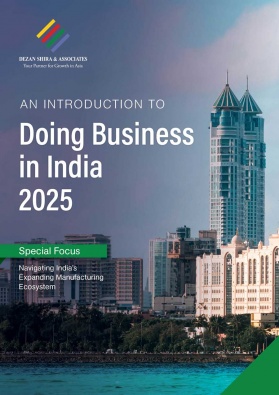India Pursues Strategic BRICS Partnerships as US Tariff Tensions Rise
United States (US) President Donald J. Trump has issued a new set of tariff threats against BRICS member countries and nations willing to work with the bloc. This has once again put the spotlight on tariff dilemmas for Indian exporters, who face rising trade risks.
India Briefing explores how India is balancing BRICS membership with US trade ties and what it means for sectors like pharma, auto, and electronics.
The return of steep US tariff threats under Trump, after the end of the 90-day deadline on July 9, has added new complexity for Indian exporters.
At the center for India is a 10 percent blanket tariff and additional tariffs imposed by the US in April 2025 on most countries and ongoing trade negotiations. Trump has issued fresh warnings of even steeper levies on BRICS members, including India, if they adopt what Trump views as anti-American economic policies.
On July 10, 2025, Trump imposed 50 percent tariff duties on Brazil, one of the founding members of the bloc.
Read more: US Tariffs Set to Resume August 1; India Pushes for Balanced Trade Pact
BRICS advances economic integration as geopolitical tensions rise
At the 17th BRICS Summit held in Rio de Janeiro on July 6, 2025, the bloc’s 11 member countries adopted 126 resolutions spanning finance, artificial intelligence (AI), and global governance. Key priorities included strengthening financial and trade cooperation, finalizing the Strategy for BRICS Economic Partnership 2030, and enhancing the New Development Bank’s (NDB) support for economies in the Global South.
US signals tariff action against BRICS members
Amid these developments, Trump issued a statement warning that India would not be exempt from tariffs if it continued its association with BRICS.
His comments followed a joint BRICS declaration—signed by all member nations including India—criticizing trade-distorting tariffs. While Brazil and South Africa publicly responded, India has yet to issue an official statement.
India’s export growth remains steady despite tariff hike
Despite the ongoing trade tensions, India’s merchandise exports have grown by 9 percent in April 2025. India’s exports to the US rose 27 percent in April 2025, even after the 10 percent tariff announced by Trump. the country’s overall exports for the month stood at US$38.5 billion, compared to US$35.3 billion for the same month in 2024. Exports to the US increased from US$6.6 billion in April 2024 to US$8.5 billion in April 2025.
The rise in outbound shipments was partly driven by the US firms ramping up imports ahead of additional tariffs expected to come into effect later in 2025. For Indian manufacturers and exporters, this turbulent period presents a short window of opportunity, but one that comes with risk.
If additional duties due to BRICS membership materialize, particularly in high-margin sectors like pharmaceuticals or electronics, the impact on pricing and supply contracts could be sharp.
Sector-wise impact on Indian businesses
Pharmaceuticals
India continues to be a global leader in the supply of generic medicines, accounting for approximately 20 percent of global generics and 62 percent of vaccine production. However, the sector now faces potential disruption due to a proposed 200 percent tariff on pharmaceutical imports from BRICS countries, announced by Trump.
This development poses a major concern for Indian pharmaceutical exporters, as the US remains a critical market—accounting for nearly one-third of India’s pharma exports, which rose by 16 percent to reach US$9 billion in FY 2024–25. Major exporters, including Sun Pharma, Aurobindo, Cipla, and Dr. Reddy’s Laboratories, are currently assessing the possible impact on pricing structures and supply agreements.
As of 2025, India is home to over 3,000 pharmaceutical companies and 10,500 manufacturing units, collectively producing over 60,000 generic brands across 60 therapeutic categories. Should these tariffs be enforced, Indian firms may need to explore alternate export destinations, reallocate volumes, or negotiate for regulatory flexibilities—such as fewer Food and Drug Administration (FDA) inspection bottlenecks—to sustain their global competitiveness.
Electronics and auto components
The electronics and automotive component sectors are currently experiencing pressure from existing US tariffs of 25 percent on certain vehicles and parts, affecting roughly US$2.89 billion in bilateral trade. In response, India has filed a proposal at the World Trade Organization (WTO) seeking to impose counter-tariffs amounting to US$724 million on US goods.
While trade negotiations continue, businesses in these industries are preparing for possible supply chain disruptions and rising operational costs.
Textiles, jewelry, and footwear
India is actively negotiating for tariff reductions from the US in key labor-intensive sectors, including textiles (currently facing 14–17 percent duties), jewelry (6–8 percent), and footwear (10–20 percent). These industries stand to benefit significantly if duty relief is secured through a bilateral trade agreement.
According to a media report published on July 4, 2025, easing of tariffs could boost India’s exports by US$4–6 billion annually over the next three years, provided producers can scale capacity and meet demand elasticity. Given their substantial contribution to employment and export earnings, tariff concessions in these sectors would enhance India’s competitiveness in global markets.
Continued tariff uncertainty despite ongoing India-US trade talks
The latest developments indicate that tariff risks for Indian exports to the US may persist, even if a trade agreement is finalized. According to the Global Trade Research Initiative (GTRI), the current US trade framework does not support broad-based tariff reductions due to the absence of Congressional authority to lower Most Favored Nation (MFN) rates. Instead, tariff actions are being implemented under emergency provisions, with selective rollbacks used as negotiation tools.
The tariffs introduced in April 2025—referred to as “Liberation Day” duties—have been challenged in a US federal court, which ruled them unlawful. However, with the ruling under appeal, any reversal is unlikely in the near term. For Indian businesses, this means trade negotiations could still result in a minimum tariff of 10 percent on exports to the US, affecting price competitiveness, especially in cost-sensitive sectors.
GTRI further cautions that uncertainty remains even in the event of temporary exemptions. Businesses may face challenges in planning and long-term contracting due to the possibility of policy changes, which could disrupt supply chains and trade operations.
India’s BRICS participation
India is actively engaging with BRICS member countries as part of its broader international economic cooperation strategy. This involves backing initiatives on trade enhancements, investment, and financial collaboration among emerging markets.
Concurrently, India has maintained a cautious stance on certain proposals, such as shifting away from dollar-based trade or adopting a shared BRICS currency. By maintaining this balanced approach, India offers exporters and investors greater predictability. Businesses continue to conduct cross-border transactions through established international systems, primarily using the US dollar. Although BRICS introduced BRICS Pay—a cross-border payment platform—in 2018, the system remains in its early stages and is not yet positioned to replace traditional financial infrastructure.
Former Reserve Bank of India (RBI) Governor Shaktikanta Das characterized such platforms as risk management tools rather than alternatives to the existing global financial system. As a result, Indian businesses currently do not need to revise their financial strategies or currency arrangements.
ALSO READ: Why BRICS Matters and India’s Strategic Role in the Multilateral Grouping
Summary
Indian businesses are operating in a fractured trade environment, but one where growth opportunities remain. While BRICS offers new market access and a collaborative framework, its short-term reality is shaped by US tariffs and the operational cost of compliance.
For now, exporters and investors may focus on managing exposure, hedging risks, and strengthening relationships across both the US and BRICS.
About Us
India Briefing is one of five regional publications under the Asia Briefing brand. It is supported by Dezan Shira & Associates, a pan-Asia, multi-disciplinary professional services firm that assists foreign investors throughout Asia, including through offices in Delhi, Mumbai, and Bengaluru in India. Dezan Shira & Associates also maintains offices or has alliance partners assisting foreign investors in China, Hong Kong SAR, Vietnam, Indonesia, Singapore, Malaysia, Mongolia, Dubai (UAE), Japan, South Korea, Nepal, The Philippines, Sri Lanka, Thailand, Italy, Germany, Bangladesh, Australia, United States, and United Kingdom and Ireland.
For a complimentary subscription to India Briefing’s content products, please click here. For support with establishing a business in India or for assistance in analyzing and entering markets, please contact the firm at india@dezshira.com or visit our website at www.dezshira.com.
- Previous Article 美国关税将于 8 月 1 日恢复:印度力推平衡贸易协定
- Next Article Apple’s Contract Manufacturers and Component Suppliers in India








